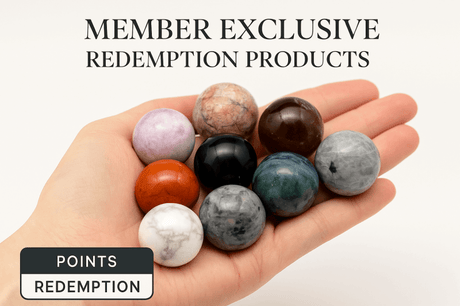The rise of healing crystals from a niche holistic practice to a mainstream market is a fascinating journey rooted in both ancient traditions and modern trends. Historically, crystals have been used for their supposed medicinal and spiritual properties, with practices dating back to antiquity. These early uses included grinding crystals into powder for various remedies, highlighting a long-standing belief in their healing capabilities.
The modern crystal craze began in the late 1970s with the popularity of quartz. Over time, interest expanded to include a wide variety of minerals. The Tucson Gem and Mineral Showcase, a major event in the crystal market, plays a crucial role in this industry. This showcase attracts thousands of miners and sellers from around the world, resulting in billions of dollars worth of crystals being traded over a few weeks. The event features everything from affordable piles of agates to high-end gems and minerals sold in secure, exclusive settings.
Unlike gemstones, the pricing of crystals is more subjective, influenced by factors like size, color, clarity, and overall aesthetic appeal. For instance, a large, high-quality red tourmaline crystal was offered for $22 million at a recent Tucson show. Traditionally, the buyers at these showcases were mainly mineral collectors and luxury gem retailers. However, a new wave of consumers interested in the purported healing properties of crystals has significantly impacted the market. This trend has driven up demand and prices for certain minerals, with some crystals that sold for $20 in 2010 now fetching $100 or more.
The belief in the healing powers of crystals has grown despite a lack of scientific evidence supporting these claims. The piezoelectric effect, which allows certain crystals to generate electricity under pressure, is often cited by enthusiasts, but its relevance to human health remains unproven. The commercial market for crystals continues to thrive, with crystal treatments becoming more popular and practitioners charging significant fees for their services.
However, skepticism remains strong among the scientific community. Studies, such as those conducted by psychologist Chris French, have shown that the perceived effects of crystal healing can be attributed to the placebo effect. Despite this, the fascination with crystals persists, driven by a combination of historical practices, modern marketing, and a desire for alternative healing methods.
The crystal industry has burgeoned into a multi-million dollar market worldwide, attracting a diverse array of buyers, sellers, and collectors. A study highlighted that there is no significant difference in the sensations reported by people handling real crystals versus fake ones, which raises questions about their scientifically proven metaphysical powers. Despite this, the industry thrives, and psychologists might need to consider the consumer protection aspects given the large sums of money involved.
Crystal sellers operate at different tiers. The lower end features online retailers with prices ranging from $5 to $1,000, while the middle tier includes galleries and high-end internet sellers offering crystals from $1,000 to $10,000. The very high-end market sees prices soar above $10,000, with some collectors treating mineral specimens like fine art.
Lenise Soren, owner of Serenity Rocks Malibu, exemplifies the high-end market, combining holistic healing with premium crystal sales. She claims that the demand and rising value of crystals are driven by their perceived healing properties and scarcity. This scarcity, compounded by the natural growth cycle of large crystals which takes millions of years, significantly impacts prices.
Online platforms like Shopify and Etsy also play a substantial role in the market. Crystalwholesaleusa.com, plays an important role in crystal wholesale sales,due to high demand. They note that while prices remain relatively stable, the scarcity and demand drive sales, sometimes making price secondary to desire.
The rapid increase in interest and demand for crystals has brought attention to ethical sourcing and environmental concerns. Much of the crystal supply comes from third-world countries, raising questions about legal mining practices and the environmental and social impacts. Buyers are encouraged to use their intuition and assess the ethics of sellers when purchasing crystals, though the potential negative energy from unethical practices does not seem to deter those seeking healing properties.
In summary, the crystal market is booming despite questions about their metaphysical efficacy. The industry ranges from affordable online sales to high-end collections, driven by demand and scarcity. Ethical sourcing and environmental impacts are emerging concerns as the market continues to grow.
